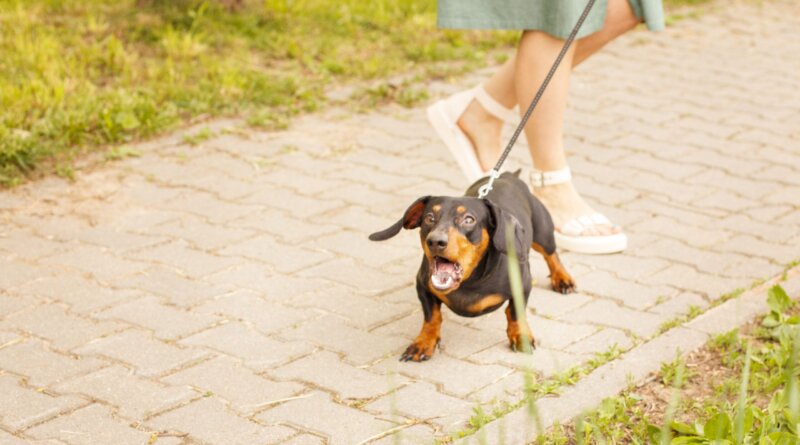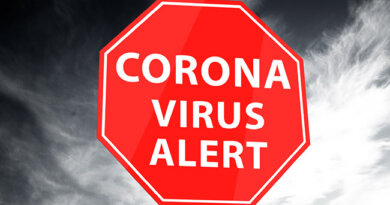14 Tips to Help a Leash Reactive Dog – Dogster
What is a leash-reactive dog? Your usually friendly dog starts barking and lunging when he sees or hears another dog or when a jogger or loud truck passes by. And you wonder what happened. After all, off a leash, he’s calm.
Many dogs can ignore these sights and sounds and take them in stride. But a leash-reactive dog responds to certain stimuli at a higher-than-normal level of intensity. His reactivity is a result of the stress that he’s experiencing. Here are tips to help manage your dog’s leash reactive behavior:
First, determine what he’s reactive to (for example, cars, people or other dogs) and why. Reasons behind leash-reactive behavior can include genetics, the behavior was successful for the dog in the past and barrier frustration, similar to being stuck behind a fence. Then, decide how to manage and develop a program for modifying the behavior.
14 tips to manage a leash-reactive dog
You can take many actions to help manage your dog’s reactivity while he’s on leash.
- Remain calm and don’t yank on or tighten the leash.
Your dog can read your voice, body language and scent. If you’re stressed, he becomes more anxious, too. A tight leash can lead to reactivity.
- Keep your dog under threshold.
Make sure that he isn’t overstimulated by things, animals or people that would otherwise cause him to be reactive. Often this means keeping him at a sufficient distance from the stimulus. So, for example, if he becomes overstimulated by dogs who are 29 feet away but not when they are 30 feet away, stay at least 30 feet away while you’re working with the issue.
- Ensure safety with the proper equipment.
Use equipment that your dog can’t escape from, such as a correctly fitted harness, a Martingale-type collar or a combination of both. Don’t use aversive equipment, such as a prong or shock collar.
- Socialize your dog at his own pace.
While you’re working with the cause of his reactivity, slowly expose him to everyday sights, sounds, people and animals that he can handle and to which he isn’t reactive. Always use positive reinforcement of treats, praise and play.
- Train your dog to perform certain behavior cues.
Teach certain behavior cues first without distractions so that your dog can focus.
The two most important cues to teach when modifying leash-reactive behavior are “look” and “turn.”
Teach a “look” cue. And also teach your dog to pay attention to you by default. Train him to walk on a loose leash. These skills help him to focus on you rather than the environment. You can also teach your dog to nose-target to your hand, as long as he doesn’t redirect his frustration onto you.
Teach an emergency U-turn when you say the cue “turn.” Lure your dog to turn 180-degrees with you in the other direction away from the stimulus, praising and rewarding immediately after the turn.
Add distractions after he understands and performs the cue. Eventually, you can use the cues when you’re out-and-about with your pup.
An added bonus of this training is that your pup is more confident because he knows what’s expected of him.
- Don’t have him greet other dogs while on leash.
A leash interferes with the natural ways dogs greet each other in which they sniff, display body language that each understands and can advance and retreat. On lead, a dog can’t retreat when he feels threatened or if he isn’t in the mood to engage. Also, leashes can become tangled, even leading to a fight.
- Don’t reward leash-reactive behavior.
If your dog’s frustrated by the leash, is reactive and wants to greet other people or dogs, don’t allow him to greet them even if he’s friendly when off lead. If he’s pulling and barking to reach them and you allow him to, you reward the behavior. He will continue to be reactive the next time he sees people or canines, believing that he will be allowed to greet them. And he would probably be over threshold and not react appropriately if he were allowed to greet.
- Exercise your dog physically and mentally prior to your walk.
Exercise helps him de-stress and take the edge off. Help your dog to succeed.
- Take your dog for walks at “off” times.
If he’s reactive to traffic, for example, try not to walk him at rush hour or on very busy streets. If he’s reactive to dogs or people, take routes at times where there aren’t likely to be any.
- Classically condition your dog’s response to the stimulus.
You’re changing your dog’s association to — that is, emotional response to — the stimulus. You want to change the way your dog feels. This is a conditioned emotional response. Any change in behavior, such as a lack of reactivity, is a bonus result of your dog’s new, positive association with the stimulus.
Here’s an example: If the stressor is a person, as soon as your dog sees the person, give a steady stream of yummy treats, such as small pieces of deboned chicken. Do this for about 20 second to a minute, depending on how reactive your dog is. The goal is for your dog to realize that the appearance of the stressor makes great things happen.
If your dog goes over threshold, keep giving chicken, but move away at a distance beyond his threshold distance where your dog isn’t reactive. Then start again.
- Add counter-conditioning and desensitization (CC&D) of your dog to the stimulus.
Once your dog gives you the conditioned emotional response you desire — happily enjoying the presence of the stimulus — you can counter-condition and desensitize your dog to the stimulus.
Here’s how: Do training setups where the stimulus is beyond your dog’s threshold distance. If your dog’s reactive on lead to other dogs, for example, use a handler with a nonreactive test dog who will ignore your dog. Stay at a distance where your dog is under threshold.
Instruct the handler to go in-sight, then out-of-sight. When the duo is in-sight and your dog is calm, give him a series of treats until the duo goes out-of-sight. The presence of the stimulus makes the yummy chicken appear.
Keep this exercise short and positive. Don’t over-do it and stress your dog. Eventually, your dog should look to you when he sees the other dog, expecting you to provide the chicken pieces. This demonstrates that he understands that the appearance of the other dog makes chicken appear, and he performs a default behavior of looking to you.
Alternatively, you can have the duo in place and you and your dog go in-sight, out-of-sight a few times.
Of course, you give a stream of treats when the other dog is in-sight and give no treats when the other dog’s not in view. End the session on a positive note.
Once your dog understands that he gets treats when a dog appears and he doesn’t become reactive, add a cue. Say in a happy tone “Where’s the dog?” when the dog appears. In subsequent training sessions, your pup will become happy when the dog appears, looking for his yummy treats from you.
If your dog becomes reactive, move away to a distance at which he was successful.
Over your next training sessions — as your dog can handle it — move very slowly closer to the other dog to desensitize him to other canines. Don’t rush the process. It may take weeks or months — or longer — for your dog to move forward. Each dog’s an individual and moves at his own pace. But, if you’re properly doing the CC&D, you should see progress. Keep your dog under threshold.
Also, over time, have him generalize this with many other dogs as test subjects, as well as new settings. This takes time and many training sessions.
-
Redirect your dog to another activity.
Carry a favorite toy that you toss immediately in front of your dog and tell him to get it. Or have about five small, yummy treats in your hand and toss them down (with him watching). Tell him to “find it.” This also has the bonus of classically conditioning your dog that something positive occurs when the stimulus, such as a dog or person to which he’s reactive, appears.
- Use holistic aids if your vet approves.
Many types of products can help reduce a dog’s stress while on a leash. These include CBD oil, calming tabs, ThunderShirt, Adaptil and Rescue Remedy.
- Get professional help if needed
If your dog’s reactivity is severe, engage the services of a veterinary behaviorist or other qualified behavior specialist.
What not to do with a leash reactive dog
Don’t punish your dog for his reactivity. Doing so inevitably makes things worse because he’s already stressed and will probably become more reactive. And you’ll lose his trust.
Also, don’t let others interfere with your behavior modification of your pup. For example, if your dog’s afraid of new people, don’t let people rush up to him.
In order to make your canine best friend’s life less stressful, determine why he’s being reactive on leash. Then you can manage the situation and successfully work through his issue. And you can both live a less stressed, happier, more fulfilling life.




